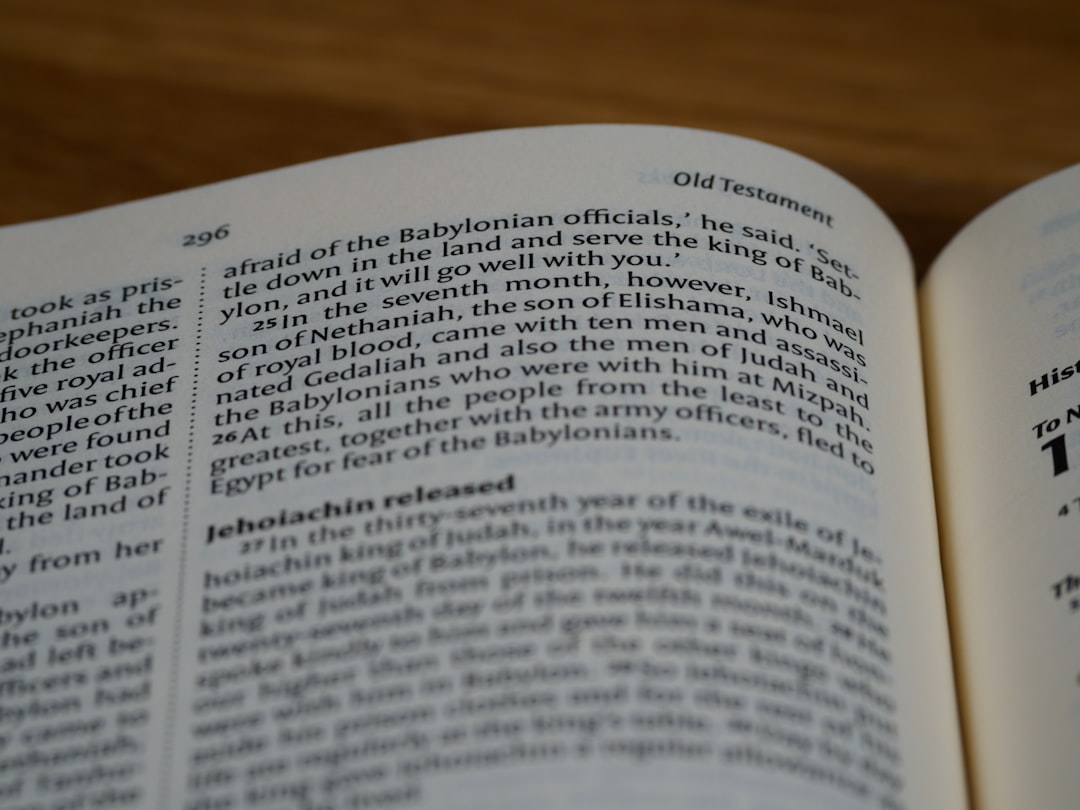

Engage prospects with a scan and streamline customer engagement with FREE QR code marketing tools by Sona – no strings attached!
Create a Free QR CodeFree consultation

No commitment

Engage prospects with a scan and streamline customer engagement with FREE QR code marketing tools by Sona – no strings attached!
Create a Free QR CodeFree consultation

No commitment
Association publication services are facing increasing pressure to engage members and deliver value in a crowded digital landscape. Traditional distribution methods like mailed magazines, printed newsletters, or static brochures often struggle to create measurable interaction and rarely provide data on what members actually want. Leaders in associations frequently notice that high-value prospects and engaged members slip through the cracks because physical publications make it difficult to track actual engagement, leading to missed opportunities and challenges in justifying ROI.
QR codes offer a strategic way to transform analog publications into interactive digital assets. With no need for app downloads, members are just a scan away from exclusive content, event registration, or feedback opportunities. Modern platforms like Sona QR make it possible to capture this intent, follow up, and gain valuable audience data to identify and segment high-fit groups that would otherwise stay anonymous.
By embedding QR codes into association publication services, organizations can unlock personalized journeys, improve publication management, and gather actionable insights for future campaigns. This approach helps address tracking, engagement, and personalization gaps so you can modernize distribution, increase conversions, and clearly measure the impact of your association’s content.

QR codes seamlessly connect print publications with digital experiences. See how they connect print and digital, turning each page, mailing, or magazine into an actionable touchpoint. When readers no longer need to type a URL or search for content, they are more likely to take action. This is especially important for associations that rely on publications to drive event attendance, membership renewals, continuing education participation, and donations. With the right QR strategy, each scan can become a precise signal of member interest that feeds your marketing operations.
Many publication programs struggle to identify which members or prospects engage with content, since mailings and magazines rarely uncover account-level behavior. QR code campaigns enable new visibility into audience actions, ensuring every scan is an opportunity to engage or re-engage a high-value reader. They replace outdated analog processes like paper forms, manual RSVP slips, and static brochures with faster, trackable digital journeys that reduce friction for members and provide clear metrics for your team.
Modernizing publication processes with QR codes lets you transform paper-based surveys, event schedules, and renewal forms into interactive, trackable experiences that produce better engagement, cleaner data, and faster follow-up. As you scale, you will be able to map which articles, topics, and offers resonate with different member cohorts, and adjust your content strategy accordingly.

In association publication services, core communication channels like magazines, research reports, and flyers often lack measurable feedback loops. Without reliable signals from readers, valuable leads are missed, and upsell or renewal opportunities are lost. QR codes fill this gap by turning every physical touchpoint into a digital gateway with measurable outcomes.
Associations also operate across diverse member personas and long lifecycle journeys. A single print issue may need to appeal to prospective members, lapsed members, students, certificants, volunteers, and corporate partners. QR codes enable tailored calls to action for each of these audiences, with the added benefit of granular data that informs future content decisions and budget allocation.
By connecting publication workflows to digital engagement, you increase member value and reduce churn caused by unseen or ignored content. You can also justify continued investment in print by demonstrating how each issue contributes to pipeline, renewals, and education revenue.

Not all QR codes serve the same purpose. Matching formats to your association’s goals ensures that scans translate into the actions that matter most. Associations typically benefit from a mix of web links, forms, and contact cards, supported by dynamic codes for always-current content.
A thoughtful approach to destinations is equally important. For example, a QR code near the President’s letter might lead to a short video message, while one in a technical article might link to a long-form resource library. The destination should reflect the reader’s mindset at that moment and provide a clear next step.
Dynamic QR codes add the ability to update links, A/B test destinations, and route scanners to personalized experiences based on context. For recurring publications and evergreen collateral, dynamic codes prevent broken links and ensure continuity for long shelf-life content.
A persistent frustration for association publication teams is not knowing which content drives member action, or being unable to track high-intent interest from print collateral. QR codes reveal growth opportunities by embedding actionable links into your most visible assets and by instrumenting member touchpoints that used to be black boxes.
Start by mapping your publication inventory: magazines, supplements, journals, directories, flyers, inserts, postcards, event programs, and chapter mailings. For each asset, identify one or two high-value actions that can be triggered with a scan. Over time, this approach produces a rich dataset on what resonates and where to invest.
As you analyze scan activity by content type, placement, and audience, you will uncover pockets of high demand and underperforming assets. These insights inform your editorial strategy, sponsor packaging, and budget allocations for both print and digital.

Many high-impact association workflows can be upgraded with QR codes. The strongest use cases align a specific physical placement with an immediate digital action, and a measurable outcome your team can track.
A good rule of thumb is to replace any manual, paper-heavy process with a QR-driven alternative. If your team still mails RSVP cards, manages volunteer sign-ups via email, or relies on switchboard calls for support, you are sitting on quick wins.
These use cases shift static communication into interactive, actionable tools that capture intent signals, retarget unconverted readers, and quantify what members value most.
Print-based marketing often loses track of prospects and members who show intent but remain anonymous. Each QR scan becomes a high-intent signal you can capture precisely, segment intelligently, and nurture across channels. The key is to deploy multiple codes across publications and events, each mapped to a specific audience insight you care about. Sona is an AI-powered marketing platform that turns first-party data into revenue through automated attribution, data activation, and workflow orchestration.
Start by defining audience categories that matter in your association: prospective members, new members, long-tenured members, lapsed members, students, certificants, volunteers, chapter leaders, exhibitors, and sponsors. Then assign QR codes that reveal intent signals for each group, such as interest in certification content or advocacy issues. For deeper strategy on using signals, read Sona’s blog post titled The Essential Guide to Intent Data.
By differentiating scans by interest, channel, and timing, you enable more relevant follow-up and reduce churn. Over time, these signals help you build high-value lookalike audiences for paid media and identify emerging topics for editorial focus.
Many associations find their print and digital efforts fragmented, which makes it hard to measure results and deliver a cohesive member experience. QR codes unify these channels by turning every offline touchpoint into a measurable onramp to your digital ecosystem, where automated follow-up can take over.
The best integrations create a consistent path from awareness to conversion, regardless of whether the journey starts with a magazine, a chapter meeting, or a conference session. Use QR codes to remove friction, capture data at the source, and connect touches across platforms.
QR codes act as the offline onramp to your digital marketing engine. With a centralized platform like Sona QR, you can manage codes at scale, monitor performance, and sync scan data with your CRM and ad platforms for closed-loop reporting.
A structured rollout helps your team move from experimentation to consistent performance. Use this checklist to plan and launch your next campaign across magazines, programs, and mailers. Pair each step with clear owners and timelines so momentum does not stall.
Before you begin, align on one or two primary outcomes, such as increasing event registrations by a specific percentage or reducing renewal friction for a targeted member segment. Then select placements and offers that naturally fit the content and audience context.
Start by defining a crisp goal. For example, drive event registrations from the conference preview spread, renewals from the membership benefits section, or CE enrollments from a technical article. Identify where drop-offs occur today, such as manual RSVP processes or users abandoning long URLs on mobile devices.
Next, select the placement opportunities with the strongest intent. Feature the QR code near compelling content and include a benefit-driven call to action. For example, “Scan to reserve your seat” or “Scan to claim your CE credit.”
Decide whether you need flexibility and tracking. Dynamic QR codes are recommended for most association use cases because they allow you to update destinations, add UTM parameters, and measure performance over time. Static codes are acceptable for timeless content like a staff directory or a general contact page. Start creating QR codes for free.
Confirm the destination experience aligns with the campaign goal. For registrations and forms, use short, mobile-optimized landing pages with minimal fields. For content downloads, consider a lead gate only if the value exchange is clear and member friendly.
Design the QR code within your brand system. Add a simple frame, incorporate brand colors, and keep sufficient quiet space around the code for reliable scanning. Pair the code with a concise, benefit-led CTA that sets expectations.
Test the code across devices, lighting conditions, and distances relevant to your placement. For magazines and mailers, test at arm’s length. For event signage, test from the back of a session room. Validate that the destination loads quickly on cellular networks and that analytics are tracking correctly.
Roll out your QR codes across the highest-impact publications and placements. Coordinate with editorial and design teams so codes are integrated early in the layout process, not added as an afterthought. Keep a version log so you can trace performance back to specific issues or mailings.
If you are running chapter programs or partner placements, supply ready-to-print assets and guidelines. Consistency of presentation increases scan rates and educates your audience on the value of scanning wherever they encounter your content.
Monitor scan volume, conversion rate, and funnel drop-off in real time. Use platform analytics to see which placements, topics, and CTAs perform best, and where users are abandoning. Adjust destinations, messaging, or form length to improve results.
Feed scan data to your CRM and marketing tools so workflows can trigger automatically. Retarget scanners with reminder emails, personalized offers, or social ads. Share campaign performance with stakeholders to build momentum and investment for future cycles.
Tracking QR engagement is about more than counting scans. It is about connecting offline actions to member growth, revenue, and retention. To make this shift, your analytics should capture the context of each scan and the downstream outcomes that follow, then tie both to member records and opportunities.
With a connected stack, you can answer crucial questions. Which articles or sections drive renewals or donations? Which chapter events generate the most CE enrollments? Which sponsor placements deliver leads? This level of precision turns publication services into a performance channel that earns budget and strategic attention.
The result is a shift from guesswork to evidence-based management. Sona QR captures real-world engagement, while Sona.com turns that engagement into insights you can act on. Together, they help you connect scans to revenue and make QR codes a core component of your performance marketing strategy.
Once your first campaigns are live, a few operational habits will compound performance. The most effective teams treat QR deployment as an iterative program, not a one-off experiment, and they align it tightly with their member journey and toolset.
Focus on tips that match your common media types and organizational goals. Associations rely heavily on magazines, direct mail, and events, so place QR codes where members are already engaging and pair them with offers that create immediate value.
For a creative deployment, print a QR code on event flyers that unlocks member-only resources and session previews. Then retarget scanners who did not register with a one-click registration link in email and a reminder ad on LinkedIn for the same topic area. Another example is placing QR codes on certification renewal invoices that open a prefilled payment page, accelerating completion and reducing support calls.

Associations across sectors are using QR codes to modernize member engagement and reveal what drives action. The strongest examples pair a targeted placement with a focused offer and a feedback loop into marketing operations.
You can adapt the following ideas to your own content and audience. Start small with one or two use cases per publication cycle, then build a playbook as you gather data and learn which combinations produce the best outcomes.
These examples highlight how interactive workflows close data gaps and lift conversions. They also demonstrate to internal stakeholders, sponsors, and members that your publication strategy is modern, responsive, and focused on value.
Getting the details right will determine whether your QR program thrives or stalls. Pay special attention to design, context, and governance so codes remain usable and destinations stay relevant long after print deadlines pass.
Design for the real world. Test in the environments where members will scan and keep your calls to action clear and benefit oriented. Remove friction at every step and you will see response rates rise.
Embedding QR codes in your association publication services positions your organization at the forefront of interactive member engagement. Publications transform into data-rich touchpoints that support your digital strategy and create measurable pathways from interest to action. When QR deployments are paired with robust analytics and CRM integration, you move from incomplete, anonymous data to precise member insights that drive strategy.
This empowers you to nurture high-value prospects, optimize content investments, and ensure lasting relevance for your association’s publications. By closing persistent gaps related to missed opportunities, incomplete data, and limited follow-up, your publication services team can demonstrate clear influence on renewals, event attendance, CE participation, and non-dues revenue.
QR codes have revolutionized association publication services by transforming traditional print materials into interactive, measurable engagement tools. Whether it’s driving member acquisition, enhancing reader experiences, or boosting event registrations, QR codes streamline access to digital content and capture valuable insights that turn every publication into a conversion engine. Imagine knowing exactly which articles or ads spark the most member interest—and instantly optimizing your strategy based on real-time data.
With Sona QR, creating dynamic, trackable QR codes is effortless. Update campaigns instantly without costly reprints, connect every scan to membership growth or event sign-ups, and gain actionable analytics that drive smarter decisions. No more guesswork—just impactful, measurable results.
Start for free with Sona QR today and unlock the full potential of your association publications to engage, convert, and grow your community.
Best practices include integrating QR codes with clear benefit-driven calls to action, testing placement and messaging, using unique codes per asset and campaign for accurate attribution, aligning content with member interests, and designing for reliable scanning across devices.
You can integrate digital solutions by embedding QR codes into print publications to link to interactive content, event registrations, feedback forms, and personalized member journeys, and by connecting scan data to your CRM for automated follow-up and audience segmentation.
Choose a provider that supports dynamic QR codes with analytics, CRM integration, and flexible content updates to ensure your publications are trackable, interactive, and aligned with your association's goals and member engagement strategies.
Using QR codes is a cost-effective option as they are inexpensive to produce and scale, allowing you to reduce waste by focusing print resources on formats and sections that drive measurable engagement and ROI.
QR codes transform static print materials into interactive digital gateways that enable instant access to content, event registrations, and feedback, provide measurable engagement data, support personalized member journeys, and improve follow-up efficiency.
The latest trends include embedding dynamic QR codes for real-time content updates, integrating scan data with CRM systems for audience segmentation and automated workflows, and using analytics to optimize content strategy and demonstrate ROI.
Measure impact by tracking QR code scan volumes, conversion rates, engagement by content type and placement, integrating scan data with CRM to attribute renewals and donations, and analyzing real-time metrics to optimize future campaigns.
Digital platforms enable interactive content delivery, provide detailed audience insights, support dynamic content updates without reprinting, automate follow-up workflows, enhance member engagement, and offer clear ROI visibility.
Ensure accessibility by using mobile-optimized landing pages linked via QR codes, providing clear instructions and benefit-driven CTAs, testing QR code usability in real-world environments, and updating content dynamically to maintain relevance.
Legal considerations include protecting member data collected via digital forms linked through QR codes, complying with privacy regulations when integrating scan data into CRMs, and ensuring content accuracy and copyright compliance in publications.
Use Sona QR's trackable codes to improve customer acquisition and engagement today.
Create Your FREE Trackable QR Code in SecondsJoin results-focused teams combining Sona Platform automation with advanced Google Ads strategies to scale lead generation

Connect your existing CRM

Free Account Enrichment

No setup fees
No commitment required

Free consultation

Get a custom Google Ads roadmap for your business






Launch campaigns that generate qualified leads in 30 days or less.
